#Fireprevention
Photo

Smokey Bear 🐻 (AKA Smokey the Bear) sign at Magnolia Springs State Park in Millen, Georgia. 🐻📛🐻📛🐻📛🐻📛🐻📛 Smokey Bear is an American campaign and advertising icon of the U.S. Forest Service. In the Wildfire Prevention Campaign, which is the longest-running public service announcement campaign in United States history, the Ad Council, the United States Forest Service (USFS), and the National Association of State Foresters (NASF), in partnership with creative agency FCB, employ Smokey Bear to educate the public about the dangers of unplanned human-caused wildfires. 🐻📛🐻📛🐻📛🐻📛🐻📛 #trippintraci #smokeybear #smokeythebear #fireprevention #forestfire #staytrippy #vanlife #rvlife #nomadlife #travelusa #nature #outdoors #camping #vancamper #vancamping #travelvloggers #travelvlogs #youtubers #youtuber #youtubevideos #youtube #vanconversion #campervan #nv200 #signs https://www.instagram.com/p/CokhZSNu05k/?igshid=NGJjMDIxMWI=
#trippintraci#smokeybear#smokeythebear#fireprevention#forestfire#staytrippy#vanlife#rvlife#nomadlife#travelusa#nature#outdoors#camping#vancamper#vancamping#travelvloggers#travelvlogs#youtubers#youtuber#youtubevideos#youtube#vanconversion#campervan#nv200#signs
2 notes
·
View notes
Photo
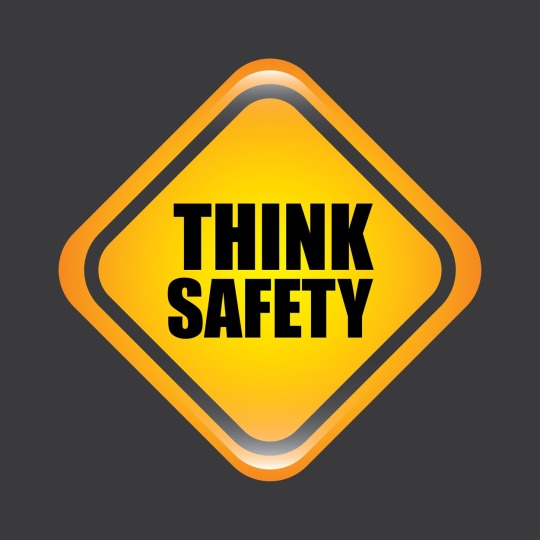
Candle Safety Tips for Homeowners https://rntozen.com/blog/diy-and-craft/candle-safety-tips-for-homeowners/?utm_source=tumblr&utm_medium=RN+To+Zen+Social+Media&utm_campaign=RN+To+Zen+Posts
#CandleCare#CandleLovers#CandleMaintenance#CandleSafety#EcoFriendlyCandles#FireHazardPrevention#FirePrevention#FireSafetyTips#FlameSafety#HomeownersGuide#HomeSafety#HouseholdSafety
0 notes
Text
The Importance And Functionality Of Fire Sprinkler Systems
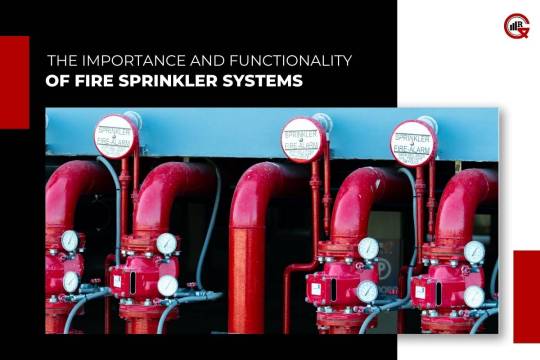
Fire sprinkler systems (FSS) are vital components of building safety infrastructure, providing rapid response and suppression of fires to minimize property damage, protect lives, and ensure the safety of occupants. In this article, we explore the key components, functionality, benefits, and advancements of fire sprinkler systems, highlighting their critical role in fire prevention and mitigation.
Understanding Fire Sprinkler Systems:
They consist of a network of pipes, valves, and sprinkler heads strategically installed throughout a building. These systems are designed to automatically detect and suppress fires by releasing water or other extinguishing agents directly onto the flames or heat source. There are various types of fire sprinkler systems, including wet pipe, dry pipe, pre-action, deluge, and foam-based systems, each tailored to specific building environments and fire risks.
Functionality and Operation:
The operation of a fire sprinkler system is triggered by heat, typically from a fire, causing a sprinkler head to activate and release water or other extinguishing agents onto the fire below. Each sprinkler head operates independently, responding only to the heat in its immediate vicinity, which helps contain and suppress the fire while minimizing water damage to unaffected areas. The rapid response of FSS can significantly reduce the spread and intensity of fires, providing valuable time for occupants to evacuate and emergency responders to arrive.
Benefits of Fire Sprinkler Systems:
FSS offers numerous benefits, including:
Rapid Response: Sprinkler systems provide immediate fire suppression, helping to prevent the rapid spread of flames and smoke.
Life Safety: By suppressing fires quickly, sprinkler systems protect occupants from harm and facilitate safe evacuation.

Cost Savings: The timely suppression of fires by sprinkler systems can result in lower repair and rebuilding costs compared to unrestrained fires.
Code Compliance: Many building codes and regulations require the installation of fire sprinkler systems in commercial, residential, and industrial buildings to ensure compliance with safety standards.
Advancements in Fire Sprinkler Technology:
Recent advancements in fire sprinkler technology have led to the development of more efficient and reliable systems. Some notable advancements include:
Enhanced Detection: Advanced detection technologies, such as smoke and heat detectors, improve the accuracy and speed of fire detection, enabling quicker response times.

Water Conservation: Low-flow sprinkler heads and water-saving technologies help reduce water consumption while maintaining effective fire suppression capabilities, promoting sustainability and environmental stewardship.
Corrosion Resistance: Corrosion-resistant materials and coatings extend the lifespan of sprinkler system components, ensuring reliability and durability in harsh environments.
Challenges and Considerations:
Despite their effectiveness, fire sprinkler systems face certain challenges and considerations, including:
Maintenance Requirements: Regular inspection, testing, and maintenance are essential to ensure the proper functioning of FSS and compliance with regulatory requirements.
False Alarms: False alarms from malfunctioning sensors or accidental activations can disrupt building occupants and emergency response efforts, highlighting the importance of system reliability and sensitivity calibration.
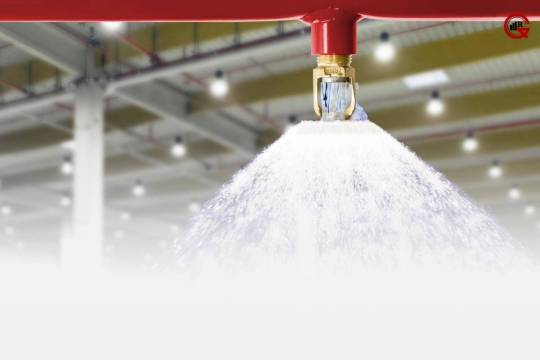
Retrofitting: Retrofitting existing buildings with FSS can be complex and costly, requiring careful planning, design, and installation to ensure compatibility and effectiveness.
Future Trends and Outlook:
The future of FSS is characterized by ongoing innovation and integration with emerging technologies. Advancements such as artificial intelligence, predictive analytics, and IoT connectivity hold the potential to further enhance the performance, efficiency, and reliability of FSS. Additionally, increased focus on sustainability, resilience, and occupant safety is driving demand for eco-friendly and smart fire suppression solutions tailored to the needs of modern buildings and environments.
Conclusion:
Fire sprinkler systems play a critical role in fire prevention and mitigation, providing rapid response and suppression capabilities to protect lives, property, and assets. From their fundamental components and functionality to the benefits, advancements, and challenges they entail, FSS remain indispensable tools for ensuring fire safety in buildings and facilities worldwide. As technology continues to evolve and regulations evolve, fire sprinkler systems will continue to adapt and innovate to meet the evolving needs of fire protection and building safety.
0 notes
Text
Nursing & Fire Safety Signs.

These signs are typically found in healthcare facilities and are used to communicate important information related to patient care, hygiene, and medical procedures. provide guidelines for visitors, including visiting hours, and restrictions. Nursing signs may include symbols or text indicating directions to specific wards or departments, instructions for hand hygiene, and reminders about patient confidentiality.
Fire safety signs are essential for alerting individuals to fire hazards emergency exit and evacuation routes.These signs guide individuals emergency exit. Fire safety signs play a critical role in emergency situations helping people quickly locate exits and firefighting resources in the event of a fire.
Banner House is a leading supplier of Nursing & fire safety signs across Australia.
#nursingcare#patientsafety#medicalfacilities#healthcare#fireprevention#emergencyevacuation#buildingsafety
0 notes
Text
Fire Extinguishers: Protecting Your Home and Business
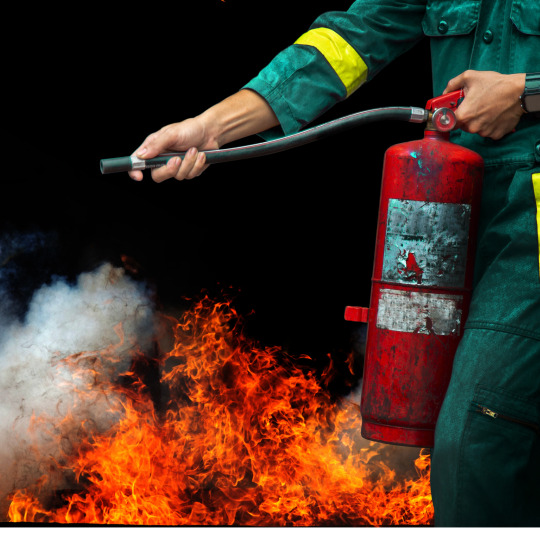
Fire extinguishers are a vital line of defense against small fires. They can be the difference between containing a minor cooking mishap and a full-blown blaze. However, it's important to understand the different types of extinguishers and how to use them properly.
Types of Fire Extinguishers
There are several types of fire extinguishers, each suited for different fire types:
Class A: Ordinary combustibles such as paper, wood, and textiles.
Class B: Flammable liquids like gasoline, oil, and grease.
Class C: Electrical fires.
Class K: Kitchen fires involving cooking fats and oils.
The most common type of fire extinguisher for home and business use is the ABC extinguisher. This type is effective against all three common fire classes (A, B, and C).
Using a Fire Extinguisher
Fire extinguishers are relatively simple to use, but remembering the steps under pressure is crucial. Here's a basic PASS acronym to remember:
Pull the safety pin.
Aim the nozzle at the base of the fire.
Squeeze the trigger to discharge the extinguisher.
Sweep the nozzle back and forth at the base of the fire.
Important Reminders
Fight small fires only. Extinguishers are for small, contained fires. If the fire is large or spreading rapidly, evacuate the building immediately and call the fire department.
Know your extinguisher's limitations. These devices have a limited amount of extinguishing agent and may not be effective on large fires.
Practice using a fire extinguisher. Familiarize yourself with how to use your fire extinguisher by reading the manual and practicing with a training extinguisher.
Fire Extinguishers for Homeowners
The National Fire Protection Association (NFPA) recommends having at least one multipurpose ABC fire extinguisher in your home. Ideally, you should have one on every level, placed in a convenient location near exits but not directly in the kitchen. Here are some additional tips for homeowners:
Install smoke detectors on every level of your home, including the basement.
Create and practice a home fire escape plan.
Have a fire extinguisher inspection and service performed every six years.
Fire Extinguishers for Businesses
Businesses have a legal responsibility to provide fire extinguishers for their employees. The specific requirements will vary depending on the size and type of business. However, some general recommendations include:
Conduct fire extinguisher training for all employees.
Post fire extinguisher locations clearly.
Regularly inspect and service fire extinguishers according to local regulations.
By understanding fire extinguishers and using them properly, you can help protect your home or business from a devastating fire.
0 notes
Text
Fire Breaks Out in Southall Home with No Working Smoke Alarms
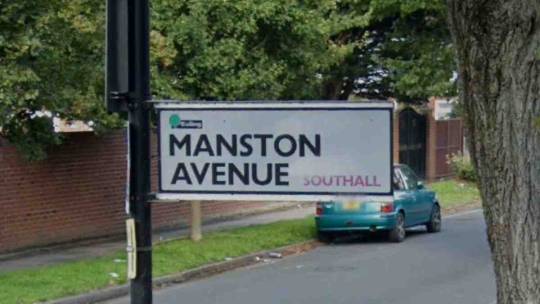
Emergency crews respond to house fire in Southall, tackling roof damage and taking one person to hospital. Read more on Hillingdon Today. #Southall #SouthallFire #HouseFire #EmergencyResponse #LFB #Firefighters #LondonAmbulance #RoofDamage #SafetyFirst #FirePrevention #ResidentialSafety
Read the full article
#Electricalappliancesafety#Emergencyresponse#emergencyservices#Firedamageassessment#Fireincident#Fireprevention#Firefighters#Homesafety#Hospitalisation#housefire#LondonAmbulanceService#Residentialarea#Residentialfire#Roofdamage#southall
0 notes
Text
Creating an Effective Emergency Evacuation Procedure Checklist: A Comprehensive Guide
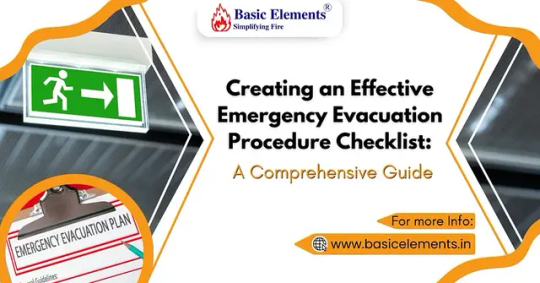
Emergency Evacuation Procedure Checklist are vital for ensuring the safety and well-being of individuals in the event of a crisis or disaster. Having a detailed evacuation plan checklist is essential to help organizations and individuals respond effectively to emergencies. This checklist typically includes important steps such as identifying emergency exits, establishing assembly points, assigning responsibilities, and communicating with relevant parties. By following an evacuation plan checklist, you can streamline the evacuation process, minimize confusion, and ensure that everyone knows what to do in case of an emergency. It helps in maintaining order and preventing panic during critical situations.
Moreover, having an Emergency Evacuation Procedure Checklist is key alongside evacuation procedures. It helps organizations get ready for different emergencies in advance. This involves evaluating risks, running drills, keeping emergency supplies, and regularly updating plans. Being well-prepared with thorough checklists is vital for protecting lives and property during emergencies. Tailor these lists to your needs for a prompt and effective response when it counts.
The key components of an emergency evacuation procedure checklist include:
1. Determining primary and secondary escape routes for different scenarios.
2. Establishing assembly points for accountability to ensure all occupants are safely evacuated.
3. Assigning roles and responsibilities to staff members to efficiently execute the evacuation plan.
4. Identifying special needs or considerations for vulnerable individuals, such as mobility-impaired or elderly occupants.
5. Ensuring access to necessary equipment and resources like fire extinguishers, first aid kits, and emergency lighting.
6. Communicating procedures clearly to all occupants through training sessions, drills, and signage. By incorporating these components into your emergency evacuation procedure checklist, you can effectively prepare your organization for potential emergencies and ensure the safety of everyone involved.
The Role of Training and Drills in Implementing the Checklist Effectively
Training and drills play a crucial role in effectively implementing Emergency Evacuation Procedure Checklist situations such as evacuation. By conducting regular evacuation drills, emergency response training, evacuation simulation exercises, and participating in an emergency preparedness training program, individuals and teams can familiarize themselves with the checklist procedures, enhance their skills, and improve their readiness to respond promptly and efficiently during real emergencies.
These activities help reinforce the importance of following the checklist steps accurately, identify any gaps or areas for improvement in the process, and ensure that all team members are well-prepared to handle any unforeseen circumstances with confidence. Ultimately, training and drills are essential components of successful checklist implementation for ensuring a safe and organized response during critical situations.
Tips for Reviewing and Updating Your Emergency Evacuation Procedure Checklist
Regularly reviewing and updating your emergency evacuation procedure checklist is crucial for ensuring the safety and effectiveness of your evacuation plans.
Here are some tips to help you stay on top of this important task:
1. Schedule Regular Reviews: Set a recurring schedule for reviewing your emergency evacuation procedures checklist. This could be quarterly, semi-annually, or annually, depending on the size and complexity of your organization.
2. Engage Stakeholders: Involve key stakeholders in the review process, including employees from different departments, safety officers, and emergency response teams. Their input can provide valuable insights and help identify areas for improvement.
3. Conduct Mock Drills: Regularly conduct mock evacuation drills to test the effectiveness of your procedures in real-life scenarios. Use these drills as opportunities to identify any gaps or weaknesses in your plan.
4. Stay Informed: Keep abreast of any changes in regulations, best practices, or local emergency response guidelines that may impact your evacuation procedures. Update your checklist accordingly to ensure compliance.
5. Document Changes: Document any revisions or updates made to your evacuation procedure checklist. Maintain clear records of when changes were implemented and communicate them effectively to all relevant parties.
By following these tips and staying proactive in reviewing and updating your emergency evacuation procedure checklist regularly, you can help ensure that your organization is well-prepared to respond effectively in case of an emergency situation.
Incorporating Technology into Your Emergency Evacuation Planning with Digital Checklists
Incorporating technology into your emergency evacuation planning can greatly enhance the efficiency and effectiveness of your procedures. By utilizing digital checklists and mobile emergency evacuation apps, you can streamline the process and ensure that all necessary steps are taken in a timely manner.
Digital evacuation procedure checklists allow you to create detailed lists of tasks that need to be completed during an evacuation. These checklists can be easily accessed on various devices, such as smartphones or tablets, making it convenient for staff members to follow along and mark off each task as it is completed. Mobile emergency evacuation apps take this a step further by providing real-time updates, notifications, and communication tools during an emergency situation. These apps can help coordinate evacuations, track the status of individuals or groups, and provide important information such as escape routes or safe zones.
By incorporating technology into your emergency preparedness plans, you can improve response times, ensure accountability, and ultimately enhance the safety of everyone involved. It’s important to regularly update and test these digital tools to ensure they are functioning properly when needed most.
In conclusion, safety comes first. Having a well-prepared emergency evacuation checklist is crucial to keep everyone safe during emergencies.
We at Basic Elements are at the forefront of management solutions
#fire safety#firesafety#fire#fireprevention#emergencypreparedness#workplacesafety#fire salamander#fire emblem#basicelements#firefighter
0 notes
Text

#building#design#interiordesign#architecture#homedecor#renovation#art#builder#artwork#carpenter#duct#hvac#ductwork#ductcleaning#hvaclife#airconditioning#heating#clean#bluecollar#hvactechnician#dryerventcleaning#ventilation#hvactools#cleanair#air#fireprevention#hvachacks#construction#engineering#efficiency
1 note
·
View note
Text
#kitchensafetytips#firesafetyawareness#kitchenriskmanagement#professionalsafetysolutions#firepreventiontips#safetytech#smartkitchensafety#firesafetystandards#protectyourspace#firesprinklerdesign#firesuppressionengineer#firesafety#fireprevention
1 note
·
View note
Text
#life safety code#NFPA101#LifeSafetyCode#FireSafety#BuildingRegulations#EgressFacilities#PublicSafety#BuildingStandards#FirePrevention#EmergencyPreparedness
0 notes
Text

Artificial Intelligence Could Prevent Hawaii Wildfires
Hawaii lawmakers propose a two-year program at UH to build an official AI wildfire warning system.
0 notes
Text

Learning and knowledge exchange - Nebosh in Fire Safety in bangalore
Embark on a journey to master Nebosh in Fire Safety in Bangalore, where knowledge meets practical application
for ensuring safety in the face of potential fire hazards. In this guide, we delve into the intricacies of
Nebosh, offering valuable insights, practical tips, and expert advice to equip you with the expertise needed
to navigate fire safety challenges effectively.
MS. Sadia Bano
Contact Us : + 91 7358113978
Email : [email protected]
#NeboshSafetyBangalore#GreenWorldGroup#FireSafetyTraining#NeboshCertification#SafetyFirstBangalore#WorkplaceSafety#FirePrevention#SafetyTraining#NeboshIndia#BangaloreSafetyExperts
0 notes
Text

Does the fire alarm service install smoke alarms?
Fire alarm service companies typically do install smoke alarms as part of their range of services. These services often include the installation, maintenance, and monitoring of various types of fire detection systems, including smoke alarms. Smoke alarms are a crucial part of fire safety, detecting the presence of smoke and providing early warning of a potential fire, which allows for timely evacuation and response.
However, the specific services offered can vary between companies. Some companies may specialize in certain types of systems or may offer additional services such as fire safety consultations, integrated fire and security systems, or specialized alarms for commercial or industrial settings. It's always best to check with the specific fire alarm service company to understand the full range of services they offer.
Fire alarm service companies like 'Fire Alarm Houston' do install smoke alarms. 'Fire Alarm Houston' is a renowned company in Houston known for its expertise in the installation, inspection, and monitoring of fire alarm systems. They provide professional services ensuring the safety and security of residential and commercial buildings. Their team is equipped with modern tools and adheres to safety protocols, ensuring a reliable and efficient installation process.
#FireSafetyFirst#SmokeAlarmInstallation#FireAlarmServices#SafetyFirst#FirePrevention#HomeSafety#SmokeDetectorsSaveLives#FireProtection#EmergencyPreparedness#SafeHome
1 note
·
View note
Text
The Essential Guide to Fire Protection: Safeguarding Your Home and Workplace

Fire: a primal force both awe-inspiring and destructive. While fire has played a crucial role in human development, its uncontrolled presence can be catastrophic. Fire protection, therefore, becomes a vital aspect of ensuring safety in our homes and workplaces. This comprehensive guide delves into the science of fire, fire prevention strategies, and the different methods of fire suppression.
Understanding Fire: The Fire Triangle
Fire doesn't just happen spontaneously. It requires a specific set of conditions to exist, often depicted as the fire triangle. Each point of the triangle represents a vital element for a fire to ignite and sustain itself:
Heat Source: This is the spark that ignites the fire. Common heat sources include electrical malfunctions, open flames, sparks from welding, and even spontaneous combustion (which can occur in materials like oily rags).
Fuel: Fire needs something to burn. This can be anything combustible, such as wood, paper, fabrics, gasoline, or even certain gases.
Oxygen: Fire needs oxygen to sustain itself. The air we breathe is roughly 21% oxygen, which is sufficient for most fires to thrive.
Disrupting any one of these elements can extinguish a fire. Fire protection strategies often target one or more points of the fire triangle.
Fire Prevention: Stopping Fire Before it Starts
The best way to deal with a fire is to prevent it from happening in the first place. Here are some key fire prevention practices:
Maintaining Electrical Systems: Faulty wiring is a leading cause of house fires. Regularly inspect electrical outlets, cords, and appliances for any signs of damage. Don't overload circuits, and have a qualified electrician address any electrical concerns.
Safeguarding Flammable Materials: Flammable liquids like gasoline, paint, and cleaning solvents should be stored in proper containers, away from heat sources. Keep aerosols in a cool, dry place, preferably a fire cabinet.
Kitchen Safety: Cooking is a common cause of fires. Never leave cooking unattended, and keep flammable items like dish towels away from the stovetop. Clean grease traps on stoves and ovens regularly.
Smoking Safety: Always extinguish cigarettes properly in a deep ashtray. Never smoke in bed, and dispose of cigarette butts carefully.
Candles and Open Flames: Never leave lit candles unattended. Place them on sturdy, heat-resistant surfaces away from flammable materials.
Heating System Maintenance: Have your heating system inspected and serviced annually. Ensure proper ventilation around heaters and fireplaces.
Decluttering: Clutter can act as fuel for a fire and impede escape routes. Keep walkways and exits clear of obstructions.
Educate Yourself and Others: Familiarize yourself with the operation of your fire extinguisher and smoke detectors. Develop a fire escape plan with your family or colleagues and practice it regularly.
Fire Suppression: When Prevention Fails
Despite our best efforts, fires can still occur. Here's what you need to know about fire suppression:
Fire Alarms: Early detection is crucial in fighting fires. Smoke detectors alert you to a potential fire, allowing you to evacuate safely and call the fire department. Install smoke detectors on every level of your home and workplace and test them monthly.
Fire Extinguishers: Portable fire extinguishers can be used to extinguish small fires before they spread. There are different types of fire extinguishers for different types of fires (Class A - ordinary combustibles, Class B - flammable liquids, Class C - electrical fires), so ensure you have the right extinguisher for the potential hazards in your environment. Knowing how to use a fire extinguisher properly is vital. Familiarize yourself with the PASS method (Pull the pin, Aim at the base of the fire, Squeeze the lever, Sweep the nozzle side to side):
Fire Sprinkler Systems: These automated systems discharge water when a fire is detected, suppressing the flames and preventing the fire from spreading. Fire sprinklers are highly effective in controlling fires and saving lives, and are required by law in many commercial buildings and some residential settings.
Fire Escape Planning: Knowing Your Way Out
Even with fire prevention measures in place, having a fire escape plan is essential. Here are some steps to consider:
Identify Exit Points: Locate all exits in your home or workplace and ensure they are clear of obstructions.
Two Ways Out: Plan two escape routes from each room in case one becomes blocked by fire.
Meeting Place: Designate a meeting place outside your home or workplace where everyone can gather after escaping a fire.
Practice Drills: Conduct fire drills regularly with your family or colleagues. This helps everyone familiarize themselves with the escape plan and act quickly in an emergency.
Conclusion: Fire Protection – A Shared Responsibility
#firesafety#fireprevention#firepreparedness#fireready#emergencypreparedness#homesafety#worksafetyp#firefighter#firerescue#firerawareness#fireescapeplan#firesuppression#firealarm#smokedetector#fireextinguisher#electricalfire#flammablematerials#firesafetytips#firepreventiontips
0 notes
Text

Check your smoke/carbon monoxide detectors!
In California since 2014, new smoke detector fire alarms are required to have a long life, permanently enclosed battery with a 10 year rated lifespan.
New residents moving into a remodeled unit may have the new smoke/carbon monoxide alarm seen on the right, however, pre-existing long time residents likely still have old outdated smoke detectors and carbon monoxide detectors in their apartment.
Because alarm sensors wear out, these units should be replaced every 10 years. Alarms have labels showing when they were made on the back of the unit. If your unit is over 10 years old or you don't see a label, the alarm is old and must be replaced.
Please submit a work order or directly go to the office as soon as possible if your unit is experiencing issues or needs to be replaced as management does not conduct regular apartment inspections to ensure that units are up to date and functioning properly.
Interpreting your smoke alarm:
A single “chirp” every 30 or 60 seconds means the battery is low and must be changed.
Chirping that continues after the battery has been replaced means the alarm is at the end of its life and the unit must be replaced. All smoke alarms must be replaced after 10 years.
If your smoke alarm is making a continued set of three loud beeps, it’s time to get out, stay out and call 911.
Interpreting your carbon monoxide detector:
A single "chirp" every 30 or 60 seconds means the battery is low and must be replaced.
CO alarms also have “end of life” sounds that vary by manufacturer. This sound sequence should be listed on the alarm itself. This means it’s time to get a new CO alarm. Chirping that continues after the battery has been replaced means the alarm is at the end of its life and the unit must be replaced.
A continuous set of four loud beeps means carbon monoxide is present in your home, so get out, stay out and call 911.
0 notes
Text
Here’s all you need to know about fire safety in healthcare facilities.
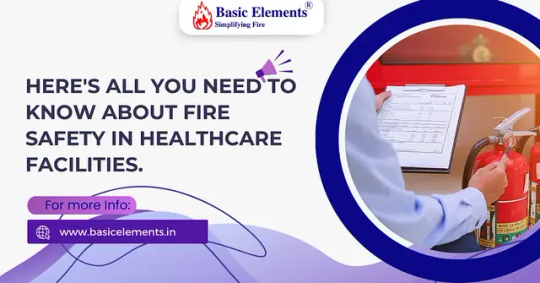
Ensuring fire safety in healthcare facilities, such as hospitals, is critical to protect patients, staff, and visitors.It helps keep everyone, including patients, doctors, and visitors, safe. To do this, hospitals follow special fire safety rules and do a lot to prevent fires from starting. This means making sure all the staff know what to do if there’s a fire, practicing fire drills, and checking the hospital regularly to spot any fire risks early. It’s also smart to have fire safety tools like smoke detectors, sprinklers, and gear for putting out fires ready to go. Plus, teaching everyone in the hospital about how to be safe from fires is key to keeping a safe place for everyone. When we focus on fire safety, we make the hospital a safer spot for everybody and make sure we can keep taking care of patients, even if there’s a fire emergency.
How to Spot and Stop Fire Dangers in Hospitals
Making sure fire safety in healthcare facilities is super important to keep patients, staff, and visitors safe. Hospitals, with all their complex equipment and lots of people, are especially at risk. Things like electrical issues, flammable stuff like oxygen tanks or cleaning products, and even human mistakes can all lead to fires in healthcare settings.
To prevent fires in medical facilities, it is essential to implement robust fire safety measures.
Here are some key steps that can be taken:
1. Conduct regular fire risk assessments: Identify potential hazards and take proactive measures to mitigate risks.
2. Install and maintain fire detection systems: Ensure that smoke detectors, heat sensors, sprinkler systems, and alarms are in place and regularly inspected.
3. Train staff on fire safety protocols: Educate employees on evacuation procedures, firefighting equipment operation, and handling flammable materials safely.
4. Keep emergency exits clear: Maintain unobstructed pathways for swift evacuation during an emergency.
5. Regularly inspect electrical systems: Prevent electrical fires by conducting routine checks on wiring, outlets, and equipment.
6. Store flammable materials properly: Securely store items like cleaning agents or chemicals away from ignition sources.
By making these preventive measures a priority and promoting a safety-conscious culture among everyone in healthcare settings, we can significantly reduce the risk of fires. Don’t forget, being proactive about fire safety not only meets regulations but also saves lives in the end.
Tips for Making a Full Fire Safety Plan for Hospitals and Clinics
Having a strong fire safety plan is very important in places like hospitals. It helps protect everyone there — patients, workers, and visitors — making sure they’re all safe. Here’s what needs to be part of that plan:
Quick Fire Spotting: Use modern technology to find fires fast so we can act right away.
Stopping Fires Quickly: Create simple plans to stop fires fast so they don’t spread and cause a lot of damage.
Putting Out Fires: Make sure your building has the right tools and knows how to use them to put out fires quickly, keeping everyone safe.
Simple Evacuation Plans: Make evacuation plans that consider the different needs of patients, like those who have trouble moving or need special equipment, so that everyone can get to safety in an emergency.
Practice and Learn Regularly: Have drills and training often so that all staff members know exactly what to do if there is a fire, making them more prepared and confident in handling emergencies.
Work Together with Fire Departments: Make sure to work closely with the local fire departments and follow the rules made by important safety organizations to make sure everything meets fire safety standards.
By focusing on these key areas, healthcare places can greatly improve their readiness for fire emergencies, making sure that patients, workers, and visitors are all safe.
How Training Employees Helps Keep Fire Safety Up to Date
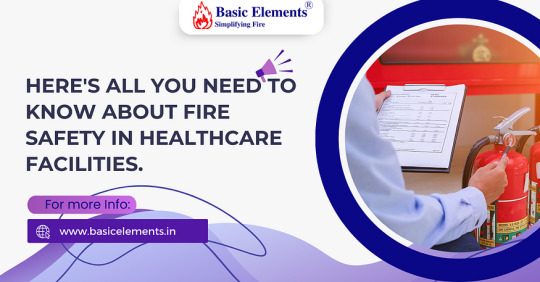
Teaching hospital staff how to stay safe during a fire, practicing fire drills often, and showing medical workers what to do in an emergency are key to keeping everyone safe, including patients and workers. By making sure everyone knows what to do and practicing together, hospitals can be better ready if a fire or another emergency happens. These steps are important because they make the place safer and give employees the confidence they need in tough times. Putting money and effort into good training and practice activities is a smart move. This way, your team will know exactly what to do during an emergency.
New Technologies and Tools to Improve Fire Safety in Hospitals and Clinics
Keep your hospital safe with the latest fire alarm systems made just for places like yours. We have special firefighting tools that are perfect for hospitals and other healthcare places, making sure everyone is protected if there’s a fire. We use new technology to make fire safety better in hospitals. This helps keep your patients and workers safe, and it also makes sure your hospital follows all the safety rules. You can count on our equipment to create a safe place for everyone in your healthcare facility
Making Fire Safety Important to Keep Patients and Staff Safe in Hospitals
Absolutely, prioritizing fire safety in healthcare facilities is crucial to protect both patients and staff. Here are some steps to ensure a safe environment:
1. Regular Inspections: Conduct routine inspections of fire extinguishers, alarms, and emergency exits to ensure they are functioning properly.
2. Staff Training: Provide comprehensive fire safety training for all employees so they know how to respond in case of an emergency.
3.Emergency Drills: Conduct regular fire drills to practice evacuation procedures and ensure everyone knows what to do in the event of a fire.
4. Proper Signage: Mark all emergency exits, evacuation routes, and firefighting equipment for easy access during a crisis.
5. Fire Safety Equipment: Invest in high-quality fire detection systems and suppression equipment to quickly contain any potential fires.
6. Collaboration with the Fire Department: Establish strong relationships with local fire departments for additional support and guidance on improving safety measures.
By following these steps diligently, healthcare facilities can create a safer environment for everyone inside while minimizing the risks associated with fires.
#basicelements#firesafety#emergencypreparedness#fire#fire safety#workplacesafety#fireprevention#fire emblem#fire salamander#firefighter
0 notes